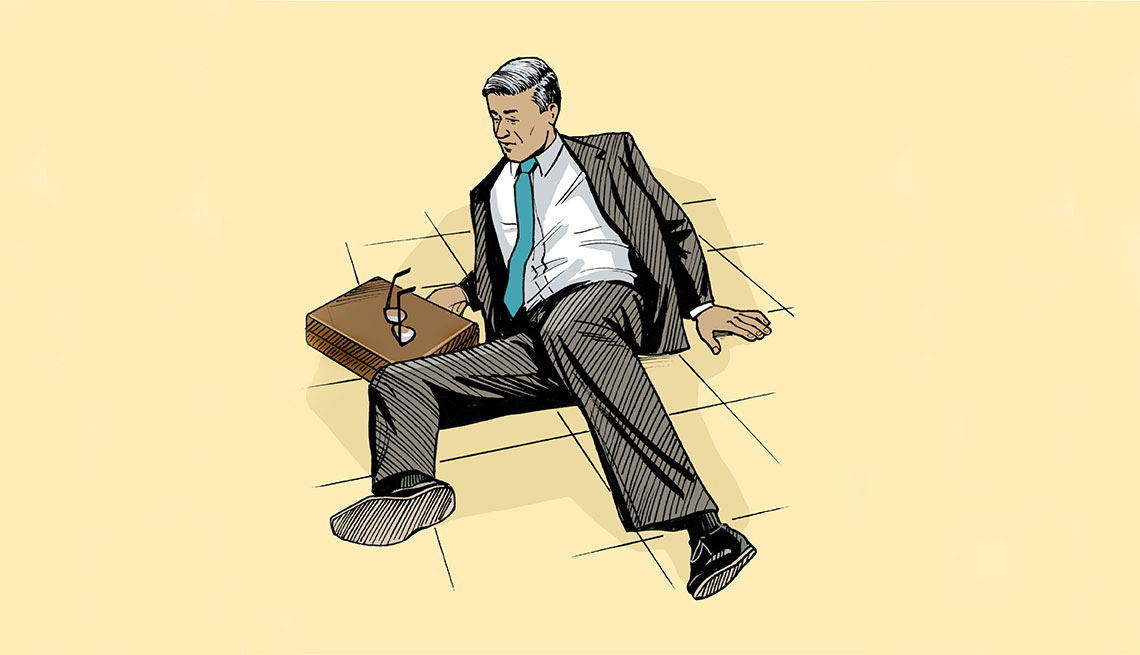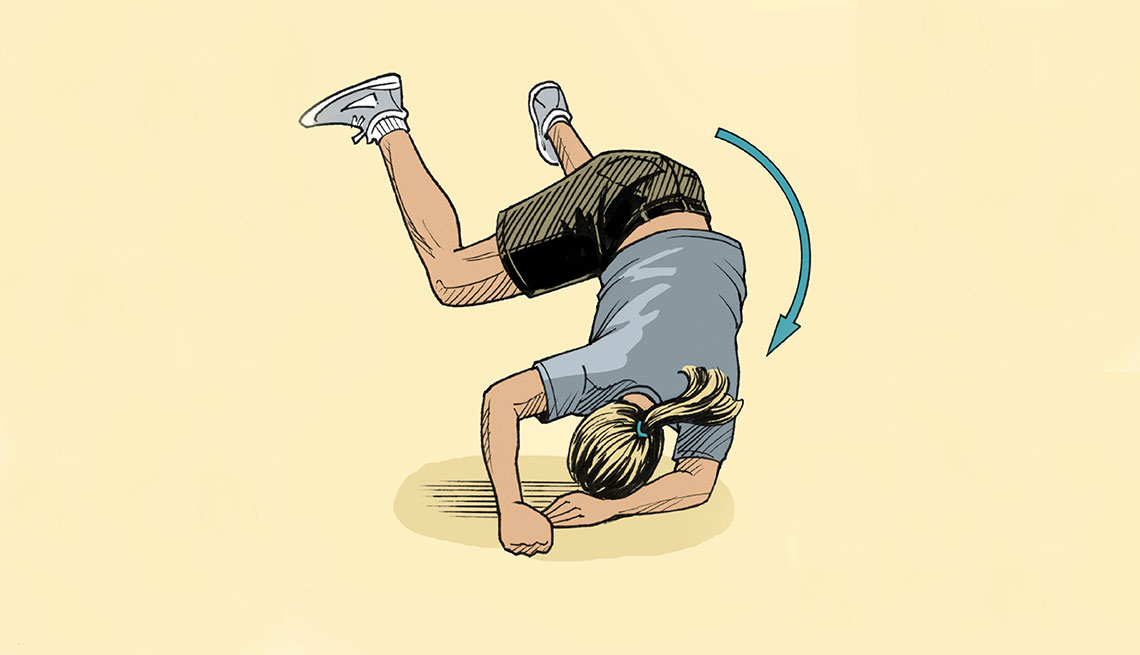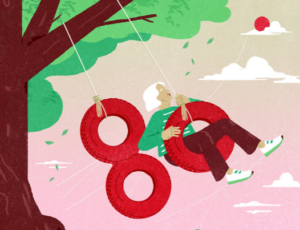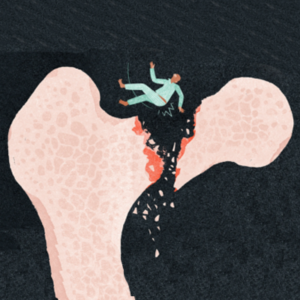Simple rules for hitting the ground as softly as possible
by Michael Zimmerman, AARP The Magazine, December 2017/January 2018
It was nearly 30 years ago that Mrs. Fletcher from the LifeCall commercials first uttered her plaintive cry: “I’ve fallen, and I can’t get up!”
Back then, it was campy and funny. But in the intervening years, chances are that you, and perhaps some of your loved ones, have taken some nasty spills. It’s not just the elderly, though, who end up on the ground.
A study in the Journal of Allied Health showed that 50- to 60-year-olds fall more than older folks. We’re more active, and that puts us more at risk of falling. Also, the Centers for Disease Control and Prevention found that people are more likely to suffer a traumatic brain injury from falling than from any other cause.

And we’re all going to fall down: The world is full of banana peels. So while avoiding a fall is job one, knowing how to take a fall when it’s inevitable is a crucial skill.
“Be smooth, don’t panic, stay loose,” says Alexa Marcigliano, who is really good at falling down. A professional stuntwoman, she’s taken serious spills in shows such as Orange Is the New Black and Blindspot. Here’s her four-point plan for a safe crash landing.
Step 1: Stay bent
The moment you sense you’ve lost your balance, get ready to fall with bent elbows and knees. “When people panic, they become rigid,” Marcigliano says. “In the stunt world, we never reach out with locked arms. Bend your elbows and have some give in your arms to soften the impact.” When you’re rigid, you’re more likely to suffer a set of injuries called FOOSH — doctor speaks for “Fall on an outstretched hand.” The result is often a broken wrist or elbow.

Step 2: Protect your head
If you’re falling forward, be sure to turn your face to the side. Falling backward? “Tuck your chin to your chest so your head doesn’t hit the ground,” Marcigliano advises.

Step 3: Land on the meat
“One of the things we try for in stunt falls is landing on meaty parts of your body — the muscles in your back, butt or thighs. Not bone.” If you keep your knees and elbows bent and look to land on muscle, you’ll be less likely to crack your elbows, knees, tailbone or hips.

Step 4: Keep falling
Your instinct will be to stop your body as quickly as you can. But your safest route is to keep rolling — indeed, the more you give in to the fall, the safer it will be. “Spread the impact across a larger part of your body; don’t concentrate impact on one area,” Marcigliano says. The more you roll with the fall, the safer you will be.
Advanced trick
“In stunts, we do something called slapping out,” Marcigliano notes. “As you fall, let your body roll, and extend your arm palm-down, to slap the ground and stop yourself.
Before the fall
While you can’t prevent all slips, there’s plenty you can do to improve your footing.
- Be here now. Practice “mindfulness” — focus on the present and be aware of your surroundings, instead of being lost in your thoughts.
- Fix your blind spots. If you can’t see it, you can’t avoid tripping over it. Have your eyesight and eyeglasses checked regularly.
- Boost your balance. Stand with your feet together. Raise one foot an inch; hold for 30 seconds. Do this for 10 reps. Repeat with your other foot.



